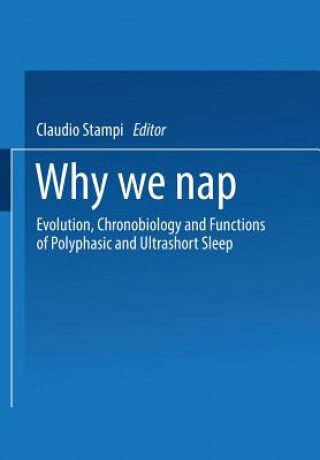
Kód: 02745828
Why We Nap
Autor TAMPI, ROUGHTON
J ÜRGEN AscHOFF "Very bad habit! Very bad habit!" Captain Giles to Joseph Conrad who had taken a siesta. -Conrad: The Shadow Line On the Multiplicity of Rest-Activity Cycles: Some Historical and Conceptual Notes According to its t ... celý popis
- Jazyk:
 Angličtina
Angličtina - Väzba: Brožovaná
- Počet strán: 280
Nakladateľ: Birkhauser Boston Inc, 2013
- Viac informácií o knihe

125.58 €

Skladom u dodávateľa v malom množstve
Odosielame za 12 - 15 dní
Potrebujete viac kusov?Ak máte záujem o viac kusov, preverte, prosím, najprv dostupnosť titulu na našej zákazníckej podpore.
Pridať medzi želanie
Mohlo by sa vám tiež páčiť
-

100 Portuguese Short Stories for Beginners Learn Portuguese with Stories with Audio
19.32 € -

Peterson Field Guide to Freshwater Fishes, Second Edition
21.75 € -22 % -

Spectrum Language Arts, Grade 4
12.03 € -16 % -

House of Leaves
23.16 € -22 % -

86 - EIGHTY SIX, Vol. 1 (light novel)
15.68 € -8 % -

Mind Fixers
17.70 € -20 % -

Psychological Types
28.22 € -

Why We Sleep
18.31 € -4 % -
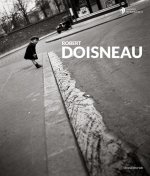
Robert Doisneau
29.14 € -6 % -

Myth of Normal
16.89 € -21 % -

Efficient MySQL Performance
53.52 € -19 % -

Love on the Brain
9 € -24 % -

HOW TO SOUND LIKE A NATIVE KOREAN SPEAKER
41.68 € -

Things We Never Got Over
16.18 € -19 % -

Creative Cyanotype: Techniques and Inspiration
20.23 € -5 % -

Limnology of the Red Lake, Romania
137.93 € -

Angry Blonde
12.13 € -23 % -

HSBA Handbook on Ship Finance
249.24 € -

Marimekko Pencils
11.53 € -13 % -

101 Danish Design Icons
39.05 € -

Usability of Speech Dialog Systems
175.07 € -

This Will Make You Smarter
7.68 € -9 % -

Ubersleep
24.78 € -

Ragnar Axelsson
49.38 € -

Schwarze Diamanten
10.51 € -26 % -
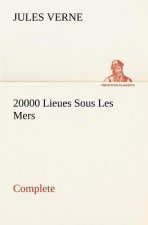
20000 Lieues Sous Les Mers - Complete
60.61 € -

Das Sozialrecht in der Finanzkrise
26.30 € -

Biografiearbeit mit Männern, m. 1 Beilage
16.49 € -8 %
Darujte túto knihu ešte dnes
- Objednajte knihu a vyberte Zaslať ako darček.
- Obratom obdržíte darovací poukaz na knihu, ktorý môžete ihneď odovzdať obdarovanému.
- Knihu zašleme na adresu obdarovaného, o nič sa nestaráte.
Viac informácií o knihe Why We Nap
Nákupom získate 314 bodov
 Anotácia knihy
Anotácia knihy
J ÜRGEN AscHOFF "Very bad habit! Very bad habit!" Captain Giles to Joseph Conrad who had taken a siesta. -Conrad: The Shadow Line On the Multiplicity of Rest-Activity Cycles: Some Historical and Conceptual Notes According to its title this book tries to answer the profound question of why we nap-and why Captain Giles was wrong in blaming Conrad for having napped. However, in this volume the term nap is not used in the narrower sense of an afternoon siesta; instead, emphasis is placed on the recurrent alternation between states of alertness and drowsiness, i. e. , on rest-activity cycles of high er frequency throughout the 24 hr. In view of this focus, two authors (Stampi, in Chapter I, and Ball, in Chapter 3) rightly refer to the psychologist Szymanski who was among the first to describe "polyphasic" activity patterns. Hence, I consider it appropriate to open this foreword with a few historical remarks. At the time when Szymanski (1920) made the distinction between "monophasic" and "polyphasic" rest-activity patterns and sleep-wake cy cles, respectively, not much was known about the mechanisms of such temporal structures. Although the botanists quite some time ago had demonstrated the endogenous nature of the "monophasic" sleep movements in plants, the hypothesis of an (still unknown) external driving force was favored by those who studied rhythms in animals and humans (Aschoff, 1990).
 Parametre knihy
Parametre knihy
Zaradenie knihy Knihy po anglicky Mathematics & science Biology, life sciences
125.58 €
- Celý názov: Why We Nap
- Podnázov: Evolution, Chronobiology, and Functions of Polyphasic and Ultrashort Sleep
- Autor: TAMPI, ROUGHTON
- Jazyk:
 Angličtina
Angličtina - Väzba: Brožovaná
- Počet strán: 280
- EAN: 9781475722123
- ISBN: 1475722125
- ID: 02745828
- Nakladateľ: Birkhauser Boston Inc
- Hmotnosť: 535 g
- Rozmery: 244 × 170 × 17 mm
- Dátum vydania: 20. November 2013
Obľúbené z iného súdka
-

Behave
21.34 € -3 % -

Behave
33.99 € -7 % -

Fantastic Fungi
30.15 € -15 % -

Scent and Chemistry - The Molecular World of Odors
92.49 € -

Biology: A Global Approach, Global Edition
83.38 € -5 % -

Alan Turing - The Enigma - The Book That Inspired the Film The Imitation Game - Updated Edition
12.03 € -

Oxford IB Study Guides: Biology for the IB Diploma
44.21 € -

Ecology - From Individuals to Ecosystems 5e
68.60 € -1 % -

Biology Coloring Workbook, 2nd Edition
24.58 € -5 % -

Biology - A Self-Teaching Guide, Third Edition
21.14 € -18 % -

Cartoon Guide to Biology
22.96 € -4 % -

Preparing Dinosaurs
88.64 € -11 % -
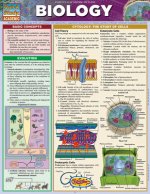
Biology
7.88 € -6 % -

Schaum's Outline of Biology, Fifth Edition
38.55 € -11 % -

Extracellular Matrix in Development and Disease
90.97 € -

Immortal Life of Henrietta Lacks
16.99 € -

ISE Vertebrates: Comparative Anatomy, Function, Evolution
76.19 € -

Biology
136.61 € -

Genius of Birds
16.38 € -14 % -

Campbell Biology in Focus, Global Edition
91.07 € -

Blood and Its Third Element
19.22 € -

Oxford IB Diploma Programme: IB Biology Print and Enhanced Online Course Book Pack
100.38 € -

A-Level Biology: AQA Year 1 & 2 Complete Revision & Practice with Online Edition
28.02 € -9 % -

Molecular & Cell Biology For Dummies, 2nd Edition
19.02 € -29 % -

Advanced Biology
78.52 € -

Biology For Dummies 3e
18.81 € -30 % -

Molecular Ecology, Third Edition
84.90 € -

Ib Biology Online Course Book 2014 Edition: Oxford Ib Diploma Programme
114.04 € -

Dirt
25.39 € -1 % -

Biophilia
33.08 € -12 % -

Bovine Reproduction, 2nd Edition
345.79 € -

A-Level Biology: AQA Year 1 & AS Exam Practice Workbook - includes Answers
7.98 € -9 % -

Mitochondria and the Future of Medicine
21.75 € -23 % -

Molecular Biotechnology - Principles and Applications of Recombinant DNA, 6th Edition
144.91 € -3 % -

Lizards of the World
146.02 € -13 % -

A-Level Biology: Edexcel A Year 1 & 2 Complete Revision & Practice with Online Edition
28.02 € -9 % -

Oxford IB Diploma Programme: Biology Course Companion
68.30 € -

Pearson Baccalaureate Biology Higher Level 2nd edition print and ebook bundle for the IB Diploma
95.62 € -

Biology for the IB Diploma Study and Revision Guide
44.32 € -
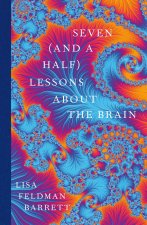
Seven and a Half Lessons About the Brain
16.38 € -23 % -

DNA
14.26 € -23 % -

IB Environmental Systems and Societies Print and Online Pack
89.75 € -

Bioinformatics For Dummies 2e
26.50 € -19 % -

Internal Assessment for Biology for the IB Diploma
40.67 € -

ISE Vander's Human Physiology
77.51 € -

Microbiology & Infectious Diseases Flashcards, Third Edition
56.16 € -

Biology for the IB MYP 4 & 5
71.94 € -

Hacking Darwin
23.47 € -17 % -

Growth of Biological Thought
49.98 €
Osobný odber Bratislava a 2642 dalších
Copyright ©2008-24 najlacnejsie-knihy.sk Všetky práva vyhradenéSúkromieCookies


 21 miliónov titulov
21 miliónov titulov Vrátenie do mesiaca
Vrátenie do mesiaca 02/210 210 99 (8-15.30h)
02/210 210 99 (8-15.30h)